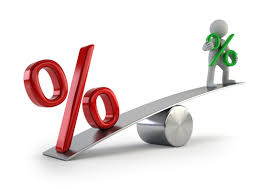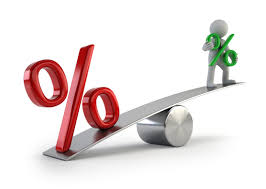
After monetary tightening in the world's second-biggest economy, China followed the U.S. Federal Reserve's third rate rise in 15 months, experts are of the opinion that the long cycle of falling interest rates in Asia could be over.
After having reined in earlier temptations to raise rates out of concern for the impact on fragile emerging economies that still needed looser monetary conditions, the Fed's widely anticipated rise of 25 basis points on Wednesday was also only its third since the global financial crisis.
But repeating its projections for at least two more rate rises this year as the U.S. economy strengthens, the Fed signaled again that such reticence is over.
"At the very least, the Fed's desire to step up the pace of policy normalization has changed the conversation at many central banks globally," said Sean Callow, an economist with Westpac in Sydney.
"Further monetary easing is now largely seen as only if needed to 'break the glass', not a plausible baseline."
And for a third time this year, the rates on the short-term funding operations it conducts for the country's banks was raised quickly by the People's Bank of China.
Arresting a persistent outflow of capital and stopping its currency weakening would otherwise have been harder for China given the Fed's move. China also wants to cool the risk of a property bubble and a run-up in debt.
With a loose commitment to keep buying bonds, though core inflation is far below its ambitious 2 percent target and opting to stand pat with its 0.1 percent short-term interest rate target, the Bank of Japan (BOJ) announced the verdict of its regular policy meeting on Thursday.
The global markets had been used to a decade of easy money and the Fed's new policy path is a sea change from that. And while emerging markets are struggling to fire up domestic demand, with a recovery in commodity prices and growth in exports, they are showing some signs of strength.
But the need to keep hold of the foreign capital that flooded in seeking higher yields when developed world rates were at rock bottom has constrained their freedom to fit domestic rates to local demand conditions. And preventing their currencies from tumbling against a rallying dollar is also a need for them.
"Even if domestic conditions warrant a cut, fears about exacerbating financial market volatility will keep central banks cautious," said Tim Condon, ING's chief Asia economist. "It definitely complicates life for those central banks that either needed to or wanted to cut rates."
Condon says he is now "uneasy" about that call and was expecting Indonesia's central bank to cut rates twice this year.
"To the extent that U.S. rate hikes do put pressure on Asian central banks to tighten policy, it will be through currency movements," Gareth Leather, senior Asia economist at Capital Economics, said in a note.
The central banks in India, Indonesia and elsewhere were prompted to defend their currencies via higher rates in 2013 when the threat of Fed policy tightening triggered a "taper tantrum" of volatility, and this ad been a dress rehearsal for such circumstances for the emerging markets.
(Source:www.reuters.com)
After having reined in earlier temptations to raise rates out of concern for the impact on fragile emerging economies that still needed looser monetary conditions, the Fed's widely anticipated rise of 25 basis points on Wednesday was also only its third since the global financial crisis.
But repeating its projections for at least two more rate rises this year as the U.S. economy strengthens, the Fed signaled again that such reticence is over.
"At the very least, the Fed's desire to step up the pace of policy normalization has changed the conversation at many central banks globally," said Sean Callow, an economist with Westpac in Sydney.
"Further monetary easing is now largely seen as only if needed to 'break the glass', not a plausible baseline."
And for a third time this year, the rates on the short-term funding operations it conducts for the country's banks was raised quickly by the People's Bank of China.
Arresting a persistent outflow of capital and stopping its currency weakening would otherwise have been harder for China given the Fed's move. China also wants to cool the risk of a property bubble and a run-up in debt.
With a loose commitment to keep buying bonds, though core inflation is far below its ambitious 2 percent target and opting to stand pat with its 0.1 percent short-term interest rate target, the Bank of Japan (BOJ) announced the verdict of its regular policy meeting on Thursday.
The global markets had been used to a decade of easy money and the Fed's new policy path is a sea change from that. And while emerging markets are struggling to fire up domestic demand, with a recovery in commodity prices and growth in exports, they are showing some signs of strength.
But the need to keep hold of the foreign capital that flooded in seeking higher yields when developed world rates were at rock bottom has constrained their freedom to fit domestic rates to local demand conditions. And preventing their currencies from tumbling against a rallying dollar is also a need for them.
"Even if domestic conditions warrant a cut, fears about exacerbating financial market volatility will keep central banks cautious," said Tim Condon, ING's chief Asia economist. "It definitely complicates life for those central banks that either needed to or wanted to cut rates."
Condon says he is now "uneasy" about that call and was expecting Indonesia's central bank to cut rates twice this year.
"To the extent that U.S. rate hikes do put pressure on Asian central banks to tighten policy, it will be through currency movements," Gareth Leather, senior Asia economist at Capital Economics, said in a note.
The central banks in India, Indonesia and elsewhere were prompted to defend their currencies via higher rates in 2013 when the threat of Fed policy tightening triggered a "taper tantrum" of volatility, and this ad been a dress rehearsal for such circumstances for the emerging markets.
(Source:www.reuters.com)





